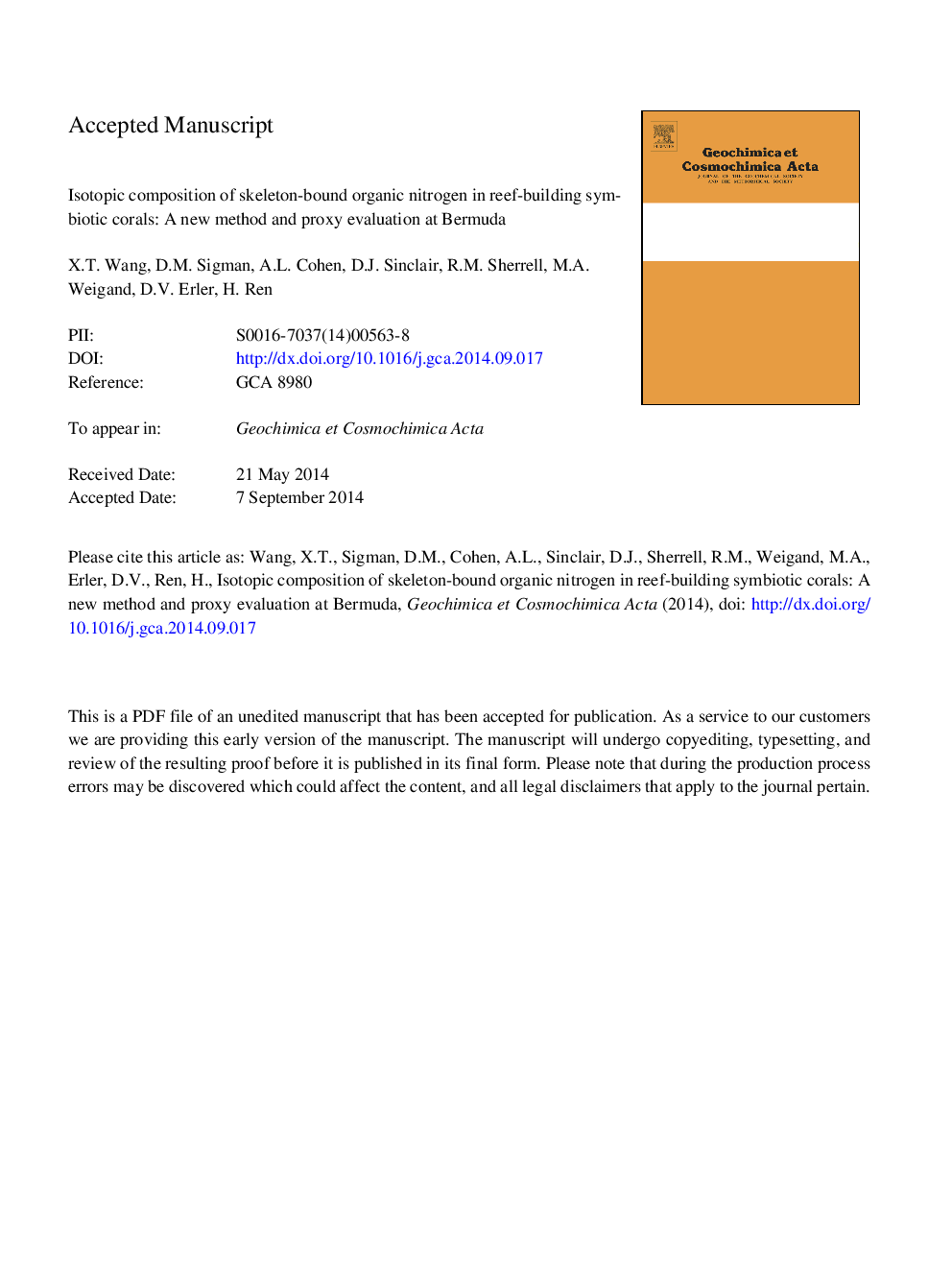| Article ID | Journal | Published Year | Pages | File Type |
|---|---|---|---|---|
| 6438167 | Geochimica et Cosmochimica Acta | 2015 | 45 Pages |
Abstract
The skeleton-bound organic nitrogen in reef-building symbiotic corals may be a high-resolution archive of ocean nitrogen cycle dynamics and a tool for understanding coral biogeochemistry and physiological processes. However, the existing methods for measuring the isotopic composition of coral skeleton-bound organic nitrogen (hereafter, CS-δ15N) either require too much skeleton material or have low precision, limiting the applications of this relatively new proxy. In addition, the controlling factors on CS-δ15N remain poorly understood: the δ15N of source nitrogen and the internal nitrogen cycle of the coral/zooxanthellae symbiosis may both be important. Here, we describe a new (“persulfate/denitrifier”-based) method for measuring CS-δ15N, requiring only 5 mg of skeleton material and yielding a long-term precision better than 0.2â° (1Ï). Using this new method, we investigate CS-δ15N at Bermuda. Ten modern Diploria labyrinthiformis coral cores/colonies from 4 sampling sites were measured for CS-δ15N. Nitrogen concentrations (nitrate + nitrite, ammonium, and dissolved organic nitrogen) and δ15N of plankton were also measured at these coral sites. Among the 4 sampling sites, CS-δ15N shows an increase with proximity to the island, from â¼3.8â° to â¼6.8â° vs. atmospheric N2, with the northern offshore site having a CS-δ15N 1-2â° higher than the δ15N of thermocline nitrate in the surrounding Sargasso Sea. Two annually resolved CS-δ15N time series suggest that the offshore-inshore CS-δ15N gradient has persisted since at least the 1970s. Plankton δ15N among these 4 sites also has an inshore increase, but of only â¼1â°. Coral physiological change must explain the remaining (â¼2â°) inshore increase in CS-δ15N, and previous work points to the coral/zooxanthellae N cycle as a control on host tissue (and thus carbonate skeletal) δ15N. The CS-δ15N gradient is hypothesized to result mainly from varying efficiency in the internal nitrogen recycling of the coral/zooxanthellae symbiosis. It is proposed that, in more productive inshore waters, greater food uptake by the coral causes a greater fraction of its low-δ15N regenerated ammonium to be excreted rather than assimilated by zooxanthellae, raising the δ15N of the inshore corals. If so, coral tissue- and CS-δ15N may prove of use to reconstruct and monitor the state of the coral/zooxanthellae symbiosis over space and time.
Related Topics
Physical Sciences and Engineering
Earth and Planetary Sciences
Geochemistry and Petrology
Authors
X.T. Wang, D.M. Sigman, A.L. Cohen, D.J. Sinclair, R.M. Sherrell, M.A. Weigand, D.V. Erler, H. Ren,
